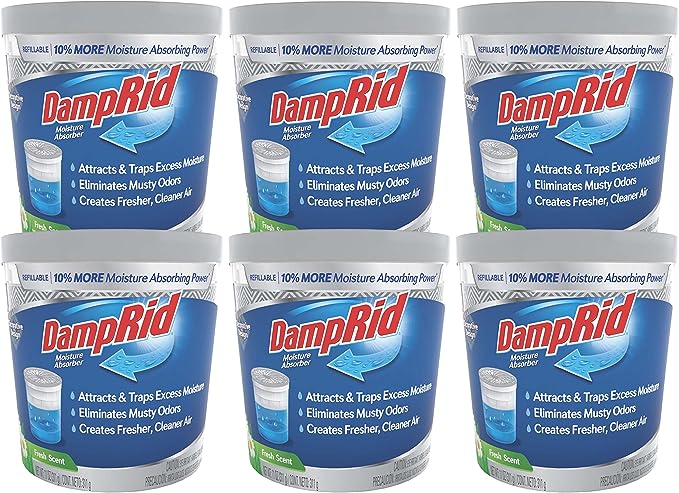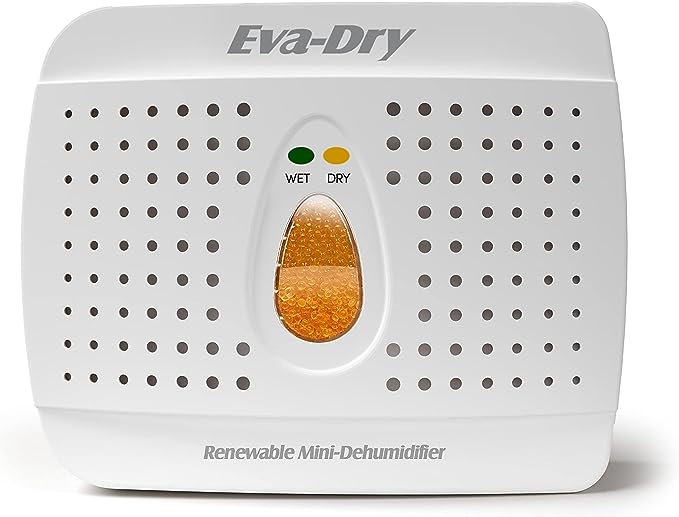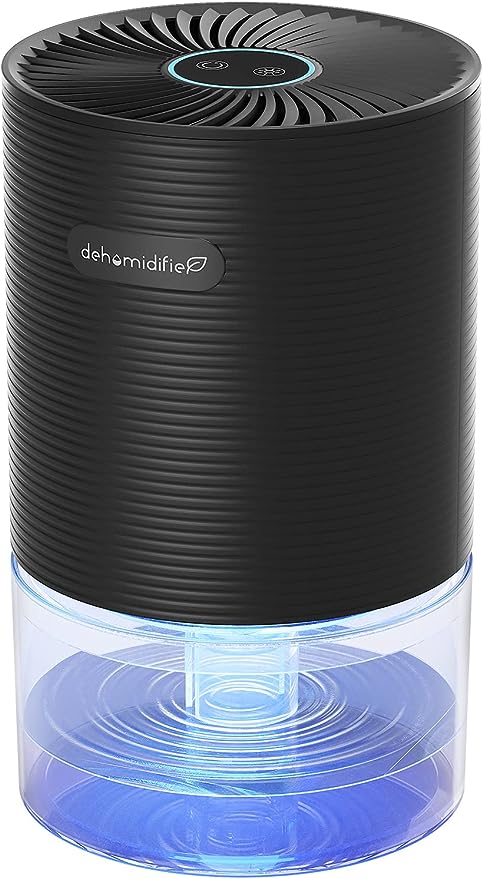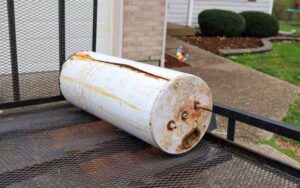Moisture in the attic can cause mold, bugs, and rotten wood problems in the attic and the whole house. Installing a dehumidifier in the attic allows moisture to escape and reduces the sensitivity of the attic to moisture-related issues. It is best to empty the dehumidifier tank regularly because it will not function properly if it is full and can become somewhat counter-productive. Attic dehumidifier aids in reducing moisture in the attic, but they are not a permanent solution.
Moisture build-up can go unnoticed for long periods, as most homeowners rarely visit the attic. Moisture in the attic can catalyze mold formation. This damages joists, rafters, and insulation. Once moisture is detected, it is essential to act quickly and install a dehumidifier to prevent further damage.
Table of Contents
Toggle
What Is a Dehumidifier?
A dehumidifier is a device that removes moisture from the air—used to maintain humidity levels in rooms and buildings. Also, low relative humidity prevents the generation of musty odor and mold.
Dehumidifiers are frequently used in attics, crawl spaces, closets, basements, and other places where moisture can quickly get in.
Signs of Moisture in The Attic:
Following are some signs of humidity that cleaning professionals look for when inspecting for moisture:
Foggy window:
It’s probably the most obvious sign to look for. When one of the attic windows becomes foggy from the inside, it indicates that moisture has accumulated.
Visible mold:
If you see mold on any part of the attic (mainly the walls), you need to be concerned about the humidity.
Wood Rot:
Wood is a naturally highly hydrophilic material, so it is prone to putrefaction. Therefore, wood rot is a good indicator of attic humidity.
Frost:
Poor ventilation can cause water vapor to freeze under the roof and cause frost in cold weather.
Also check: Ideal Humidity for Home in Winter.
| Image | Product | Features | Price |
|
Best Seller

|
Dehumidifier,TABYIK 35 OZ Small Dehumidifiers for Room for Home |
TABYIK 35OZ dehumidifier: Efficient, colorful light, auto shut-off, portable design. |
$45.99 |
|
Best Seller

|
DampRid Refillable Moisture Absorber, 11 oz., 6-Pack |
Eliminate odors, long-lasting, decorative design. |
|
|
Best Seller

|
DampRid Hi-Capacity Moisture Absorber Bucket, 2 Pack |
Inhibits mold, eliminates odors, long-lasting freshness. |
$26.84
|
|
Best Seller

|
Eva-dry E-333 Mini Dehumidifier, Pack of 1, White Sand |
Mini dehumidifier: Easy to use, lasts 20-30 days, cordless, durable. |
$14.97 |
|
Best Seller

|
Dehumidifiers for Home, 25oz Dehumidifier Small Dehumidifiers for Room 285sq.ft |
Efficient, quiet, safe dehumidifier for bedroom. Energy-saving, compact design. |
$39.99
|
Causes of Attic Moisture:
There are many causes for moisture build-up, but it can be challenging to guess the exact cause (even an expert), as multiple problems can cause it. Some of the reasons are:
Pipe leaks:
Pipe leaks (due to ruptures and imperfections) are a severe problem for home plumbing systems. Moisture build-up is usually caused by leaking pipes directly connected to the attic.
Foundation:
If the foundation of the building is not made adequately moisture resistant, water will rise below the foundation (by capillarity) and diffuse into the main building. As you pass through the basement, you will find a way through and spread into the attic.
Roof Leaks:
Even if a leak occurs through a small opening in the roof, the attic is its direct recipient, and moisture can build up in the attic later.
Indoor Appliances:
Moisture can also come from indoor home equipment like steam from the iron, material dryer, and the like, or areas like the toilet and kitchen. Moisture problems can increase while the airflow pipes get disconnected because the wet air is transferred to the attic.
Outdoor Ventilation:
The attic must be effectively ventilated so the wet air isn’t always trapped inside, mainly in humid weather. The airflow channels must also be checked for blockage, like bird nests.
Why Should You Use A Dehumidifier In The Attic?
Now that we understand the issues caused by high attic humidity, the question remains: Is it necessary to install an attic dehumidifier?
Several things influence the answer:
Climate:
The climate in your area is very important. A dehumidifier may be especially important if you reside in a humid environment, such as the Southeastern United States, or if you face seasonal humidity swings.
Size and Function of the Attic:
Consider the size and purpose of your attic. A tiny, unused attic may not need a dehumidifier, whereas a bigger attic utilized for storage or as a living area may.
Ventilation:
Adequate ventilation is essential for managing attic Humidity. Before purchasing a dehumidifier, make sure your attic is properly vented.
Existing Issues:
If you’ve already seen indicators of high humidity, such as mold development or structural damage, using a dehumidifier becomes even more important.
Would A Dehumidifier Help Reduce Moisture in the Attic?
Yes, a dehumidifier can reduce the moisture in your attic. It removes water from the air and stores it in a tank, and you have to frequently empty the tank to ensure the efficient working of the dehumidifier. To avoid normal drainage, you may get one with a larger tank on the way to take longer to fill. You should also thoroughly clean the dehumidifier coils to ensure the proper working of the dehumidifier.
How To Prevent Moisture in Your Attic:
Here are approaches you may take to prevent moisture from gathering in your attic:
Proper ventilation:
The attic must be effectively ventilated. Blockages to vent channels must be eliminated as well.
Fix Plumbing Issues:
Broken pipes and plumbing inadequacies must take delivery of pinnacle precedence during repairs. There are fitness troubles related to plumbing leaks and malfunctions. These issues must be taken seriously when you have occupants with breathing issues.
Fix Roof Leaks:
Roof leaks must be duly changed wherein important because it damages the roofing substances and creates channels for water to go into your attic.
Proper insulation:
Insulation prevents warm air from coming into your attic. This prevents condensation that results in moisture, mainly while you stay in a relatively cooler part of the house.
Also check: Does the Nest Thermostat regulate humidity?
When Should You Not Use a Dehumidifier?
Aside from the benefit of saving more on strength costs, a dehumidifier must not be used 24/7 within the critical construction and the attic. Dry air has damaging consequences like breathing troubles, sore throat, and dry and itchy eyes.
An excellent way is to operate your home depot dehumidifier to keep Relative Humidity in the 30% – 50% range.
Use your dehumidifier most effectively when the relative humidity (RH) is greater than 50%. Too little moisture causes fitness problems, while too much moisture breeds algae.
Conclusion
You can use a dehumidifier in your attic. It works best in case you empty the tank before it overflows. Apart from using a home dehumidifier, there are many solutions to your attics` moisture trouble that are green and cost-effective. Before installing a dehumidifier in any part of your house, please consult with an HVAC technician. K2 Heating And Cooling Technicians can assist in providing a quality solution for moisture in the attic or the whole place. Our expert technicians can advise you on the best location for dehumidifier installation.





















